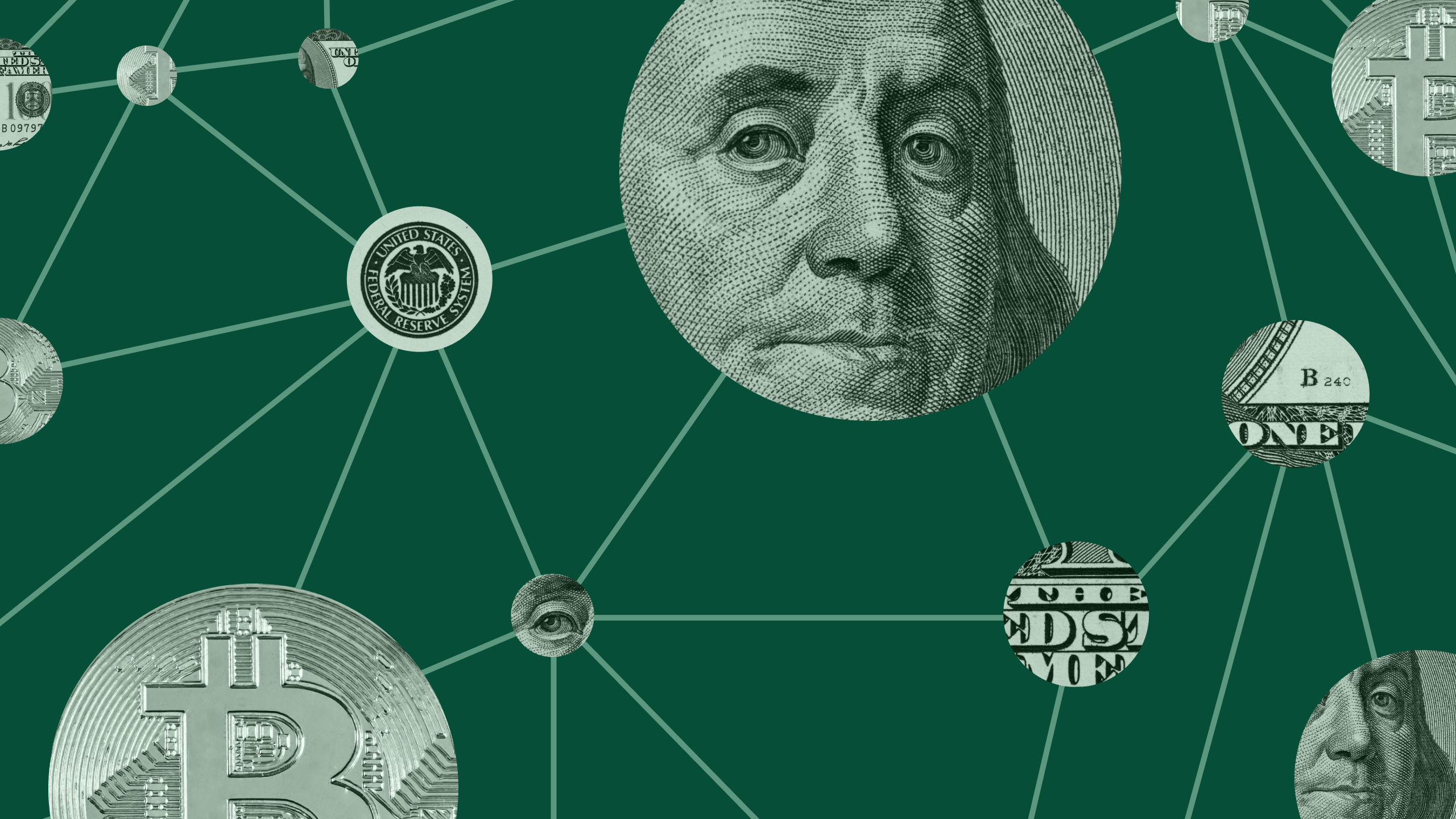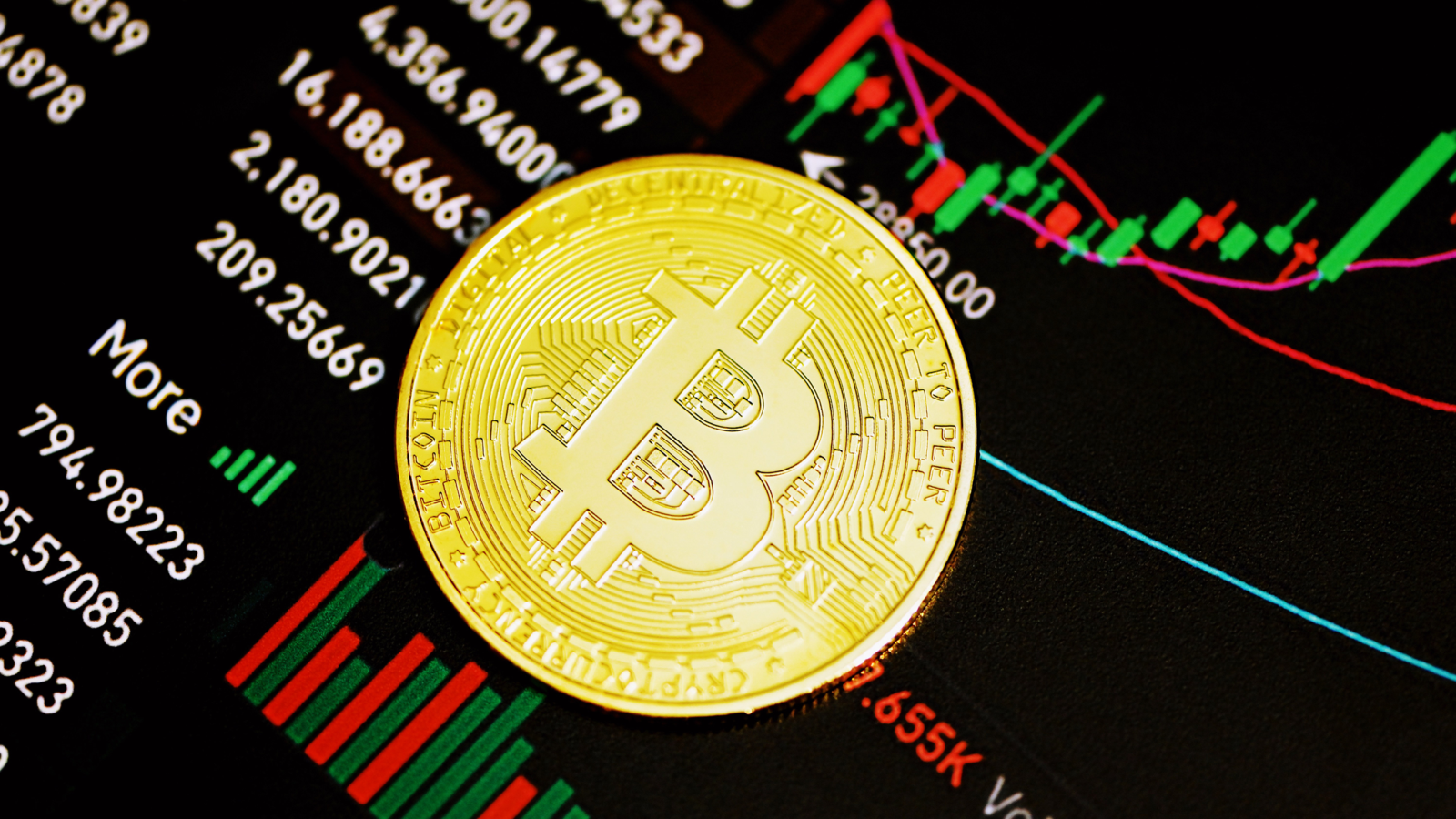Wall Street Does DeFi
New digital-asset funds from BlackRock and WisdomTree are bypassing traditional systems and issuing assets directly on the blockchain.

Sign up for smart news, insights, and analysis on the biggest financial stories of the day.
DeFi is in the middle of an identity crisis. Born out of the 2008 financial meltdown, the decentralized finance movement aimed to reinvent a too-big-to-fail global financial system that wasn’t always looking out for the little guys. Why give money to the big banks when you could create a peer-to-peer system you controlled?
But if cutting out Wall Street with blockchain technology was an objective, the “cypherpunks” have failed: the world’s largest banks are about to cash in on the technology they’ve been championing for some two decades. BlackRock, WisdomTree, and a handful of others have all launched new digital-native funds in recent months, from tokenized money market funds to digital Treasuries. These new products are much cheaper to operate and come with additional benefits, like the ability to instantaneously settle transactions. They’re also tapping into an industry that is transacting trillions of dollars on-chain per month.
“It’s potentially one of the biggest technological advances in markets since trading became electronic,” said Aaron Kaplan, CEO of the digitally native brokerage Prometheum, the first firm to get the regulatory green-light to safeguard and clear digital assets. “It has the potential to disrupt not just the securities industry, but much larger financial institutions.”
Chain Wallets?
The beauty of the underlying technology is that it can “tokenize” real-world assets, anything from real estate, to stocks, to fine art. The tokens are held on a blockchain, a digital ledger, and can be bought and sold just like any other security. Whoever owns the token owns the real-world asset. The size of the market for all this is mind-boggling: the total value of tokenized assets could reach $24 trillion by 2027, according to a report by the World Economic Forum, which would account for nearly 10% of global GDP.
“DeFi has these interesting use cases, but it’s essentially stuck in its own universe,” said Kaplan, who was called to testify before a Congressional committee last year. Blockchain is a pseudo gray area for regulators as assets like cryptocurrency have yet to be defined as a commodity or a security. “The innovations have already been incubated in the DeFi space,” he said. “Now, they’re trying to figure out how to use them for traditional securities.”
The biggest nut for companies to crack is securing these digital assets and keeping them out of the hands of cybercriminals. Regulators are lobbing lawsuits at blockchain-based exchanges, and politicians are calling for more scrutiny before the tech transforms how assets are traded and secured.
Stuck in the BUIDL. BlackRock became one of the first major firms to launch a digital asset fund in March, and it’s paying off. Its Institutional Digital Liquidity Fund (BUIDL) now has about $500 million in assets under management. It effectively acts like a digital currency, offering a stable value of $1 per token that institutional investors can trade and collateralize in other on-chain transactions. The fund invests in cash, Treasury bills, and repurchase agreements, earning yield for holders. It’s become an early success story and a major test case for Wall Street’s bet on DeFi.
Being among the first to market has allowed BlackRock, the world’s largest asset manager, to build BUIDL into one of the largest and most recognizable products in its class. But, with investment minimums of upwards of $5 million, these new digital funds aren’t going to be a mass market any time soon. But for the super rich, it’s a no-brainer.
Block & Tackle. A key advantage is the ability to instantaneously settle transactions. Take traditional yield-earning funds like bonds, for example. After the transition to T-1 in the US, fixed income products generally take one day to settle, allowing time for the assets to be cleared and delivered to the seller. But, on-chain funds close instantaneously, meaning the funds can be returned and redeployed right away, saving hours of wasted time.
When you’re dealing with millions of dollars, every second counts.
Faster and Cheaper? For blockchain proponents, this is just the next step in trading technology. Once upon a time, traders held paper tickets on the exchange floors as proof of ownership of an asset. When the stock market started hitting hundreds of thousands of trades per day, brokers needed a better way to record trades other than on glorified Post-It notes. With the advent of online record keepers in the 1970s, ticket receipts went digital.
Kaplan and other proponents expect blockchain will be the greatest leap forward since that switch from paper to digital. “It’s just inefficient the way it’s being done now,” he said.











